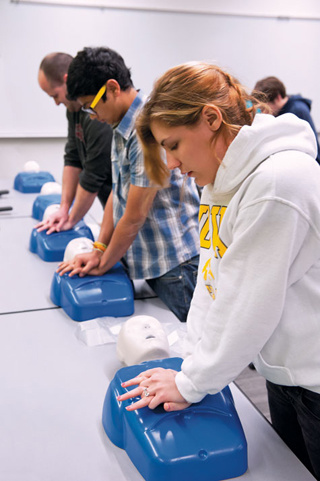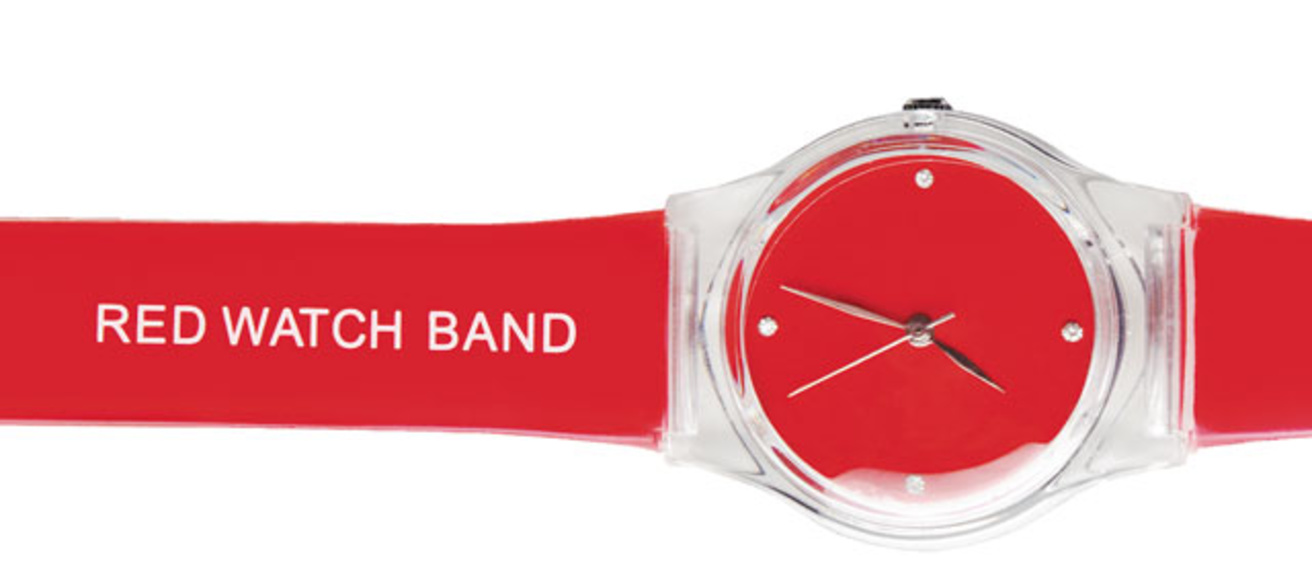Brittany Hesse doesn’t want to be a bystander.
The UI sophomore from Smithland, Iowa, wants to make sure that if she encounters an emergency situation, she has the knowledge, skills, and confidence to help someone in trouble.
That’s why she jumped at the opportunity to receive free CPR and AED (automated external defibrillator) training along with alcohol emergency training through the Red Watch Band program.
“My parents are both in the medical field and I’ve seen them use their CPR training when we encounter emergencies at things like sporting events, so I feel like it’s just a good thing to have,” she says. “It makes you feel a little more comfortable in those situations, that you don’t have to just sit there and watch somebody struggle while you’re waiting for an ambulance.”

Heartsaver CPR and AED certification is a big part of each two-hour Red Watch Band course, but it’s only a piece.
The program itself aims to prevent death from alcohol overdose by teaching students how to recognize signs of alcohol poisoning, how to handle alcohol emergencies, and how and when to summon professional help.
It’s part of a national program that began in the spring of 2009 at Stony Brook University in New York after a faculty member there lost her son to acute alcohol overdose during his first year of college.
Health Iowa, the health promotion and education branch of Student Health Service, brought the program to Iowa three years ago. Since then, more than 1,300 UI students have gone through the training.
“This is a way for students to take a proactive stance,” says Michele Armstrong, coordinator of the Red Watch Band program at Iowa. “It’s emergency preparedness in the same way that a fire drill or a tornado drill is. It might happen. It might not. If it does happen, these students will know what to do because they’ve had this practice and hands-on training.”
What the data shows
Student Health Service administers post-training surveys immediately following each training course, and again three months later. Recent surveys show that:
66% of students discussed the program with a friend
More than 90% of participants agreed or strongly agreed that they can identify the signs of alcohol overdose and are more willing to intervene
45% drink fewer drinks as a result of the training
13% avoid drinking games as a result of the training
13% used Red Watch Band training in the three months immediately following their training
The class starts with an assessment of students’ current knowledge of alcohol poisoning and determination of how confident they are in their ability to help someone in need.
Then instructors talk about the difference between a leader and a bystander, discuss the causes and consequences of alcohol poisoning and related emergencies, and teach students how to respond to an alcohol emergency, including when and how to call for help.
“Our primary goal is to make sure that students understand that it is good for them to help somebody who has had too much to drink,” Armstrong says. “We tell them, you’re not a buzzkill when you say, ‘You’ve had too much to drink, we should take you to the hospital.’ That’s just watching out for each other and making sure that you have your friends’ backs.”
Students who complete the program receive a red watch, which symbolizes the band of students who are trained to watch over one another when every second counts.
“It’s nice to know that a lot of kids on campus are taking the initiative to go through a training like this,” Hesse says. “It makes me feel secure that if something were to happen to me or my friends, somebody nearby would know what to do.”
Learn more about Red Watch Band online at studenthealth.uiowa.edu/wellness/red-watch-band or www.stonybrook.edu/sb/redwatchband.
